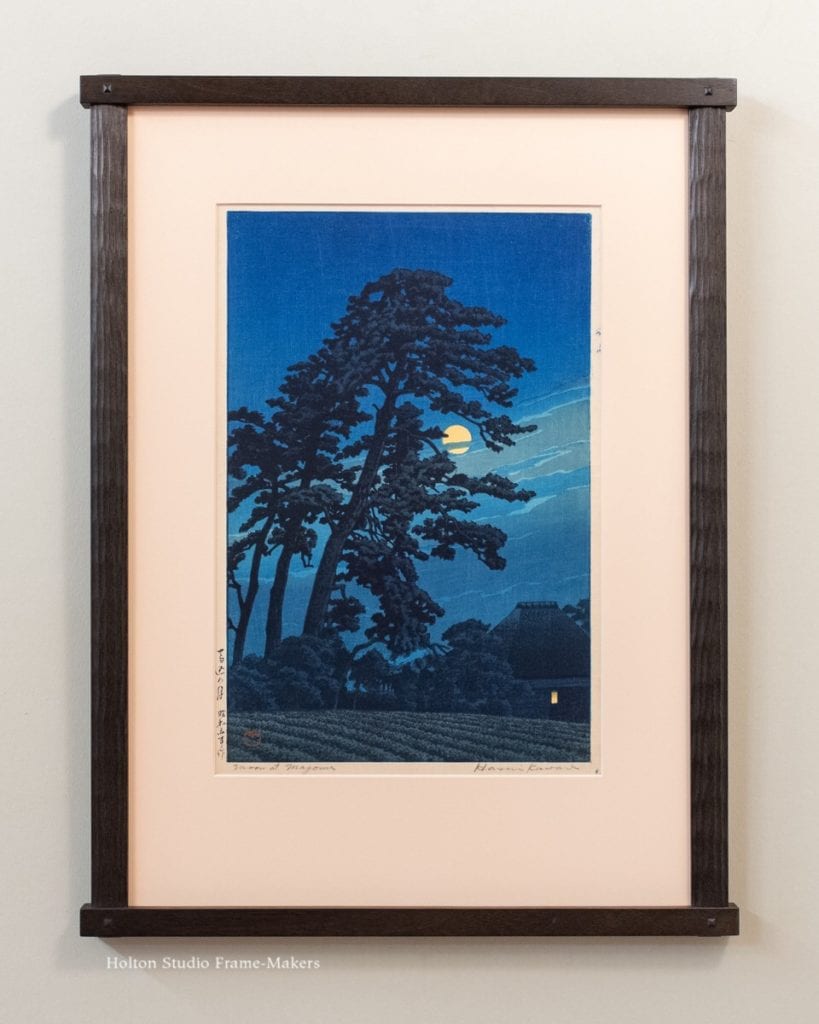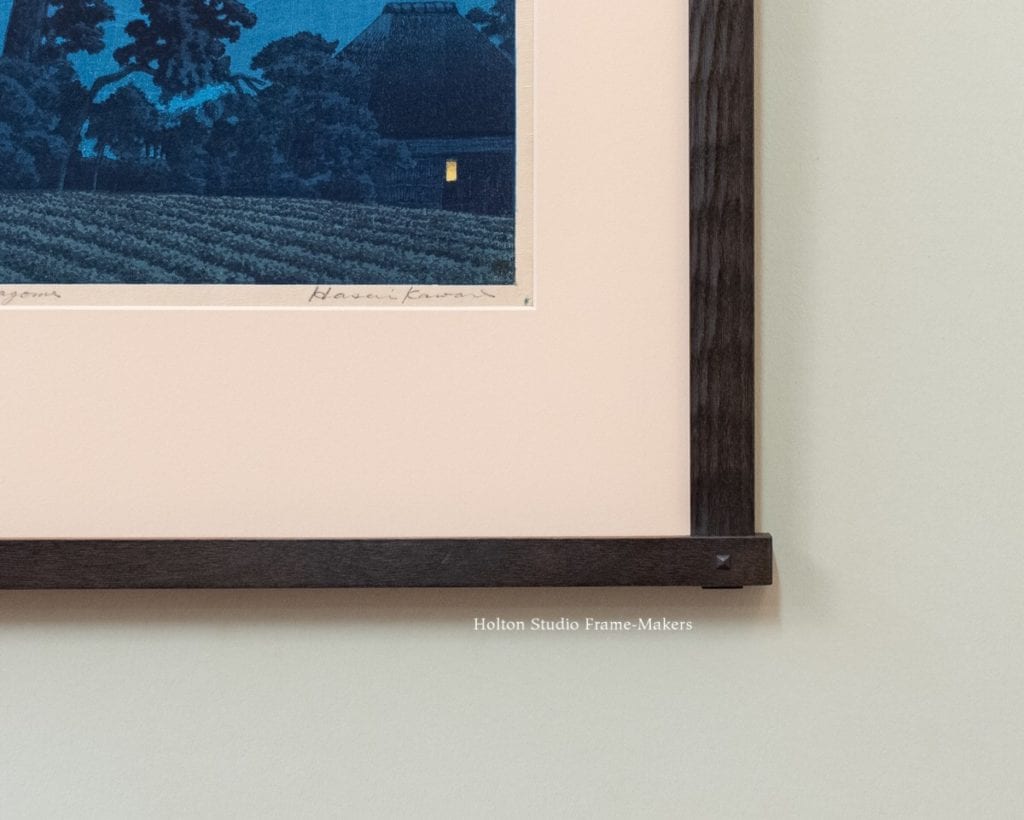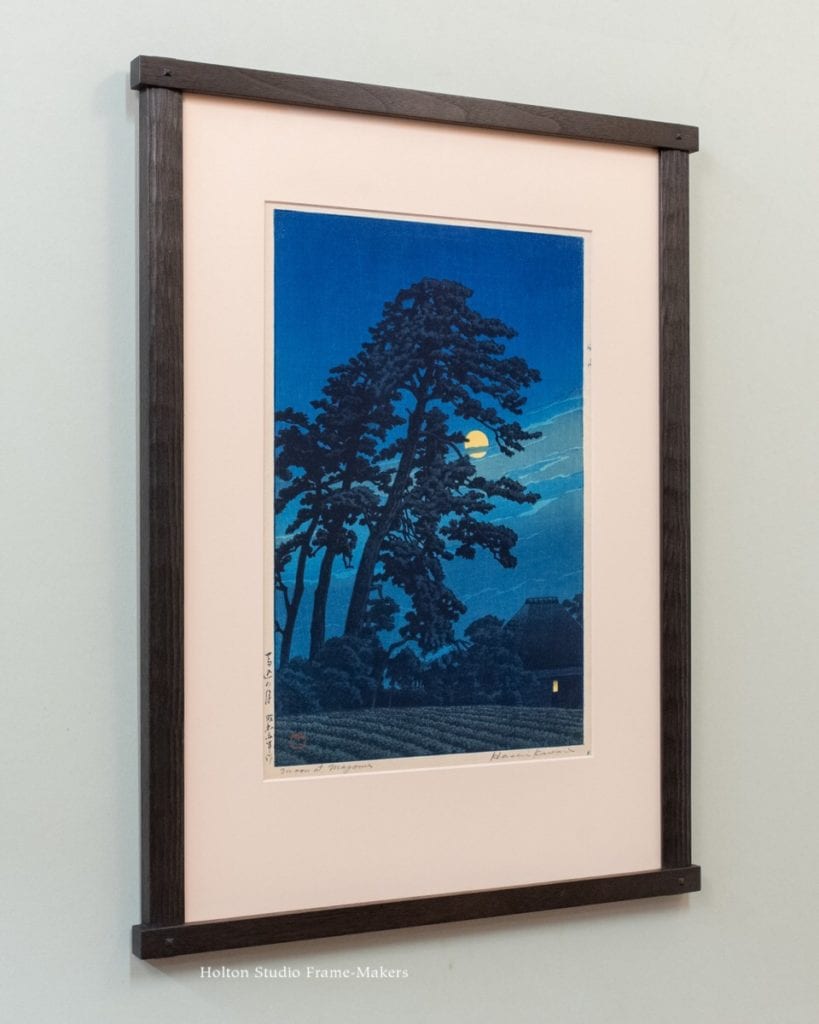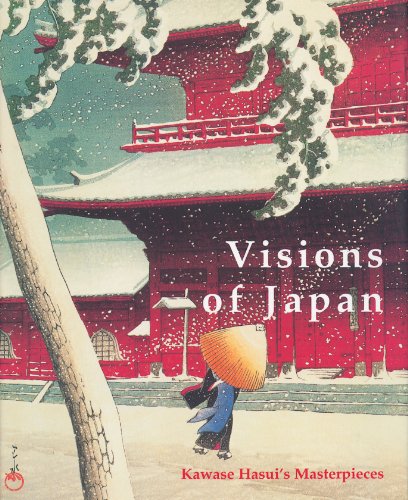We love to frame Shin Hanga prints—the twentieth century revival of Japan’s great printmaking tradition. The term “Shin Hanga” means “new prints,” and was coined by the printing house Watanabe—now in its second century—to apply to the contemporary work rooted in the esteemed older ukiyo-e tradition.  Some of the more famous names in Shin Hanga are artists like Hiroshi Yoshida, Ohara Koson, and the creator of the print featured here, “Moon at Magome,” (1930) by Kawase Hasui (1883-1957). The print is Oban size (about 14-1/4″ x 9-1/2″).
Some of the more famous names in Shin Hanga are artists like Hiroshi Yoshida, Ohara Koson, and the creator of the print featured here, “Moon at Magome,” (1930) by Kawase Hasui (1883-1957). The print is Oban size (about 14-1/4″ x 9-1/2″).
This frame, which is walnut stained black, is a simple adaptation of our Yoshida frame (named for Hiroshi Yoshida). On vertical prints, we typically orient the Yoshida’s mortise-and-tenon joints with the top and bottom members, which are usually 1″ wide, let into the sides, usually 3/4″ wide. But with the powerful element of the picture’s tree in mind, I chose to adapt the vertical members to echo the tree trunk. So I switched the joint orientation, having the sides let into the top and bottom, so that the sides would be wider; and then rounded and carved those members.
Throughout the Shin Hanga tradition we see the inspired vision of a harmony between the works of nature and the works of humanity, and this print is no exception. My hope in this frame design is to honor and amplify that theme.
The authoritative text on Hasui is Kendall Brown’s Visions of Japan: Kawase Hasui’s Masterpieces…
Our friends at Annex Galleries have a nice inventory of work by Hasui, here…
Annex Galleries also has a good short biography of the artist, here…
« Back to Blog

